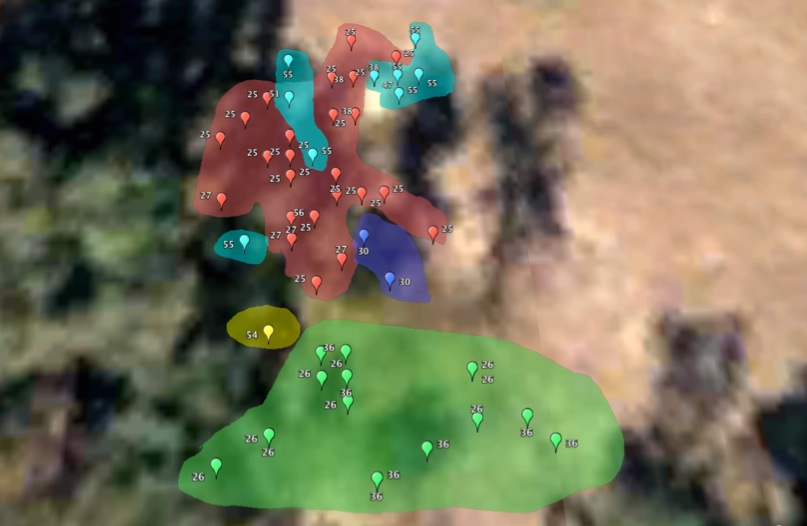We recently published a paper that outlines the patterns of genetic diversity in the highly endangered Ziziphus celata. Over the past several years, we’ve been using microsatellites to study genetic variation in this species that is endemic to the Lake Wales Ridge. In this paper, we present the data that indicate that the species is highly clonal, with only about 30 clonal lineages remaining for the entire species. Most populations comprise a single clone, which is particularly problematic for this species since it is also self-incompatible.
There was a nice story about this paper on the Florida Museum of Natural History’s Science Stories site.
Gitzendanner, M. A., C. W. Weekley, C. C. Germain-Aubrey, D. E. Soltis, P. S. Soltis. 2012. Microsatellite evidence for high clonality and limited genetic diversity in Ziziphus celata (Rhamnaceae), an endangered, self-incompatible shrub endemic to the Lake Wales Ridge, Florida, USA. Conservation Genetics 13: 223-234.

Abstract
Genetic data are often crucial for designing management strategies for rare and endangered species. Ziziphus celata is an endangered sandhill shrub endemic to the Lake Wales Ridge of central Florida. This self-incompatible clonal species is known from only 14 wild populations, most of which are small (under 100 plants). Focusing on the five populations discovered in 2007, we evaluate the level of genetic diversity and identify clonal lineages within the wild populations of the species with a set of microsatellite loci. To account for somatic mutations and genotyping errors, we identified clonal lineages using a threshold cutoff for pair-wise genetic distances among samples. The microsatellites had up to 18 alleles/locus, and, consistent with outcrossing, samples were highly heterozygous (average population level Ho = 0.69). Most populations of Z. celata consist of a single clone, and the most diverse population has only 10 clones. Overall Z. celata comprises 41 multi-locus genotypes, and 30 clonal lineages. With nearly 1,000 recorded plants (595 genotyped) and only 30 clonal lineages, Ziziphus celata is highly clonal: clonal richness, R = 0.049. The pair-wise distance method facilitates identification of clonal lineages, avoiding overestimation of clonal diversity. In most cases, the samples that grouped into a lineage were one to four plants differing from a surrounding genotype by a single microsatellite repeat insertion/deletion mutation, consistent with these having arisen via somatic mutations. Our data will enable managers to incorporate extant diversity from wild populations into ex situ collections. Additionally, our research demonstrates the utility of microsatellites for conservation of imperiled species, identifying genotypes of high priority for preservation.